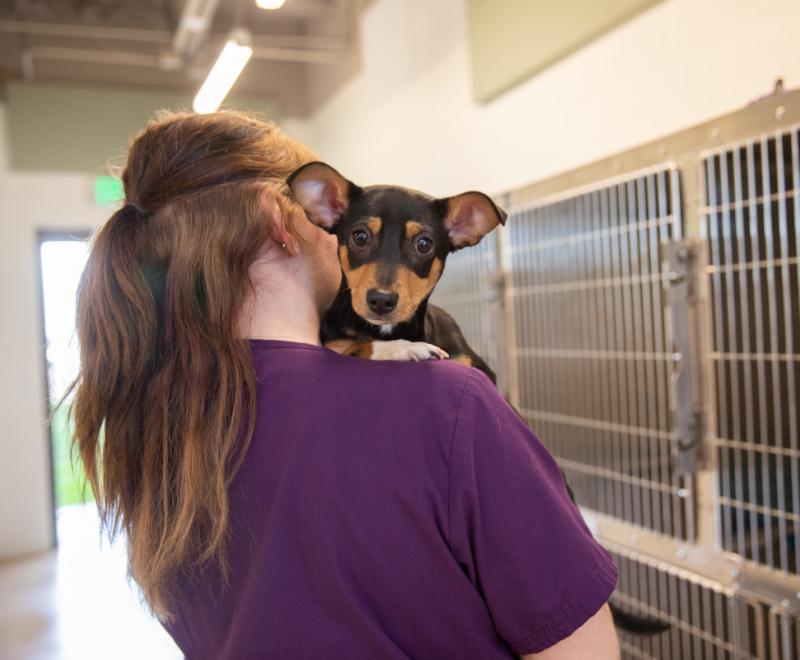A well-rounded approach to saving more dogs and cats

They call it the cheat sheet, but it’s really more than that. It’s really a comprehensive checklist created by the Best Friends national shelter medicine team to guide animal shelter staffs on what may be their most important daily ritual: rounds.
The sheet guides veterinarians, animal care staff, and foster/adoptions staff on the best way to observe pets in the shelter, including identifying their needs and making sure their road to adoption is as fast and smooth as possible.
Helping shelters around the country efficiently implement daily rounds is one of the ways that Best Friends works with them to save more pets’ lives and bring organizations to no-kill in 2025.
“Daily population rounds are a well-established activity in animal sheltering, a pillar of shelter population management, and a current practice,” says Dr. Erin Katribe, director of Best Friends’ national veterinary program. But, she adds, many shelters might not be doing daily rounds because of limited staffing, while others often find the job daunting, sometimes taking hours to complete.
[New programs help save more dogs and cats in Nebraska]
Dr. Erin and the two other vets on her team — Dr. Becca Boronat and Dr. Andrea Cermele — have plenty of experience working with shelters around the country, which includes dealing with challenges faced by shelters with limited staffing and resources. One of their conclusions: Population rounds — generally regarded as one of the most effective ways of minimizing animals’ length of stay in a shelter — are a critical part of animal sheltering that, with planning, can work at any shelter.
Dr. Becca says shelter personnel often think they just don’t have the time to do rounds, or they might not approach them in a helpful way. “At some shelters, rounds might be more about taking inventory, updating medical records, and entering data on spreadsheets," she says. "They miss the most important thing: having an entire team take a close look each day and ask the same questions about a dog or cat’s overall progress.”
Dr. Erin recalls her time deployed to a Texas animal shelter that housed as many as 700 animals. “It was a big challenge for us, but we realized — after careful planning that included specific steps to take each day — that we could get through rounds in 30 to 45 minutes.”
In addition to becoming more efficient, the new, more team-oriented approach to rounds helps the staff (especially those in larger shelters) pay more attention to detail to ensure that all the animals get the care they need — medical or behavioral.
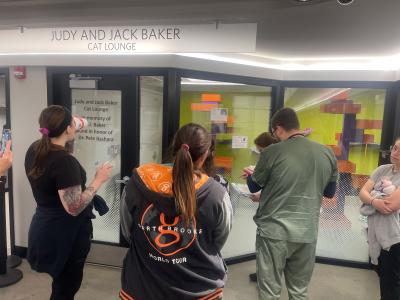
Spreading the good news
Encouraged by her experience in Texas, Dr. Erin and the team decided to create a training course that could help shelters around the country get rounds up and running, with the ultimate goal being to help them save more lives. Dr. Erin says: “We wondered: Could we go out and walk a shelter staff through this process? Could we get them started working in a new way that would save them time, help them save more animals, and reduce overall length of stay?”
Since implementing this new way for Best Friends to support shelters, the answer has been a resounding yes. Best Friends has done week-long training sessions for shelters in different parts of the United States, including Nebraska Humane Society in Omaha, Nebraska. Since implementing a new way of doing population rounds, shelter leadership says more animals are being saved, staff morale is higher, and statistics are showing an overall reduction in length of stay.
[Tennessee animal shelter’s rapid turnaround]
Dr. Amber Horn, Nebraska Humane Society’s animal medical director, says the training was well-received. “There hasn’t been much guidance out there on population rounds," she says. "Rounds at our shelter had been done solely by individual department. Our medical staff did theirs, as did our former behavior team and the foster care team.
“We found gaps because we weren’t talking to each other enough. Sometimes we just weren’t catching the fine details. Best Friends helped us to take a more holistic approach to what our animals need.”
These days, population rounds at Nebraska Humane Society begin at 2 p.m. A single rounds team includes the various stakeholders invested in the animals’ well-being: medical, foster, animal care, etc. That’s when the cheat sheet comes into play. It contains a list of questions pertaining to each animal, formulated to get the staff thinking about the animals’ needs on that particular day: Who are you? How are you? Do you need something today?
The rounds team checks for proper identification of each animal; reviews overall physical and behavioral health; and discusses such items as kennel space requirements, enrichment needs, and whether it’s time for spay/neuter, a move to foster care, or going to an adoption event.
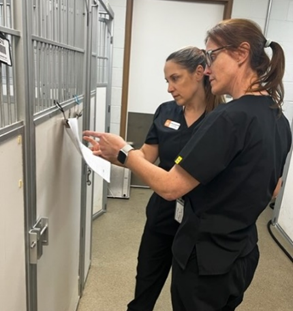
Working with the team, boosting morale
Best Friends employee Jakie Hernandez has been working at Nebraska Humane Society since last July as part of Best Friends’ national shelter embed program, made possible in part by a grant from Maddie’s Fund®. “The staff embraced the new approach once they saw how effective they were as a team,” Jakie says. “Right now, we’re continuing to work with them to ensure everyone is following protocol and meeting the needs of each animal.”
Dr. Becca says she noticed the rounds team bonding when she stopped in at staff meetings. “We would attend for just five minutes to see how everything was going,” she says. “And you could see them talking to each other. And then I heard one staff person say that she’s not alone anymore. Now she feels more a part of the team.”
Dr. Andrea says rounds have also helped in a practical way: The staff is taking notice of animals who are longer-term residents but aren’t yet adopted. “During one particular day of rounds, the staff noticed a cat living in an area that wasn’t visible to the public. So they moved her closer to the adoption floor, and that same day she was adopted.”
Improved relationships among staff members are another byproduct of the training. “We’re doing it just as much for the humans as the animals,” says Dr. Erin. “After the training, we’ve seen fractured relationships in shelters really start to repair. When departments work better together, the shelter becomes more functional, and that translates to more lives saved.”
Dr. Horn, in her 20th year at Nebraska Humane Society, agrees: “Our staff definitely is showing more collegiality and more rapport with each other. We’ve even begun to include new staff members in our population rounds as part of our onboarding process. It helps integrate them with the team, and they get a chance to see us working well together.”
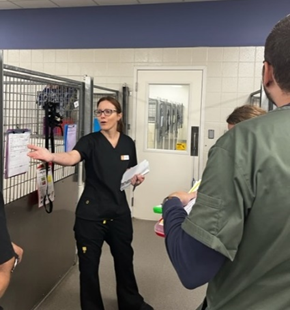
The payoff: Pets are going home faster
The benefits of these collaborative rounds at Nebraska Humane Society are evident: more efficient and proactive processes, detailed animal care, and improved staff morale. But the biggest takeaway of all is that animals are heading for new homes in less time than before.
Statistics compiled by Nebraska Humane Society indicate that for cats and dogs 6 months and older, average length of stay from January 2023 to April 2024 was down by 18.8% for cats and 23.2% for dogs.
Indeed, the data affirms what Dr. Erin and her team believed could be achieved when they started the program: Well-implemented population rounds can have a direct impact on getting pets into homes in less time.
“And that’s really cool,” says Dr. Erin. “Ideally, that’s what we’re after.”
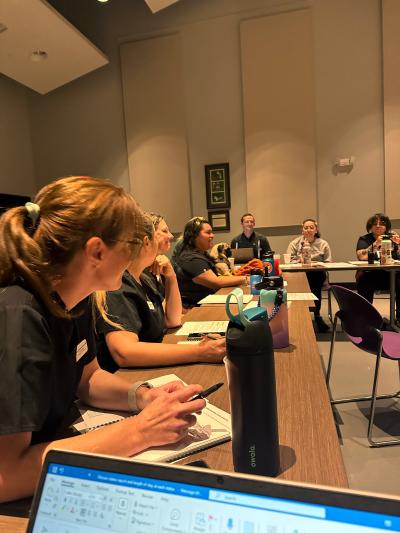
Let's make every shelter and every community no-kill in 2025
Our goal at Best Friends is to support all animal shelters in the U.S. in reaching no-kill in 2025. No-kill means saving every dog and cat in a shelter who can be saved, accounting for community safety and good quality of life for pets.
Shelter staff can’t do it alone. Saving animals in shelters is everyone’s responsibility, and it takes support and participation from the community. No-kill is possible when we work together thoughtfully, honestly, and collaboratively.
